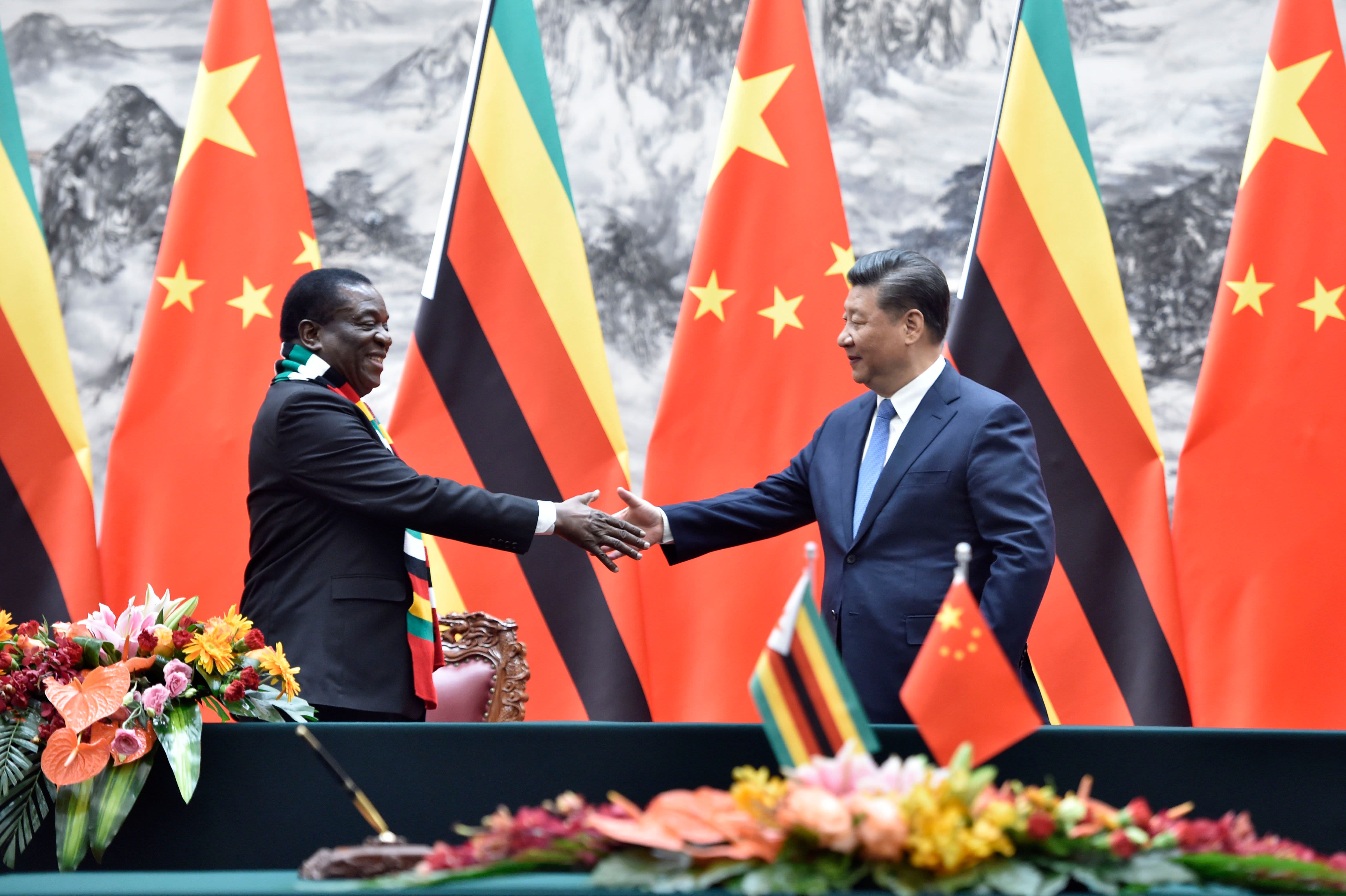A LOCAL weekly this week carried a headline that simply said “They are Clueless”, against a backdrop of a montage showing all Zimbabwe’s cabinet ministers. It was totally apt and never more right than now. The Sadc heads of state held a summit in Harare last week and this simply served to increase the mayhem and confusion. 
The heads of state (spurred by President Robert Mugabe) adopted the theme for the summit on industrialisation and he punted the idea that the way forward was a strange animal they call “beneficiation”. This means adding value to raw materials before they are sold or consumed. The debate took place against the backdrop of the near total collapse of industry in Zimbabwe and the beginnings of a recession in South Africa with little progress if any, in the rest of the region.
In reality the summit took place against the backdrop of a crisis of governance in Africa, associated with political and armed conflicts which are driving tens of millions of people into the stream of economic and political migrants trying to make their way to greener pastures. Nowhere is this more dramatically illustrated than in the present migration crisis in the Mediterranean region and the flood of refugees from all parts of the continent into South Africa.
Mugabe and Zuma both took the opportunity to insult different ethnic groups and say that the African diaspora in South Africa had no right to be there and should “go home”.
Although they condemned the xenophobic violence levied against migrants in South Africa, Mugabe also fuelled the situation by talking about migrants being uneducated and criminal. But Botswana President Ian Khama talked about the causes of such migration as being the failure of good governance in many countries and Zimbabwe in particular.
Khama was correct; between 1983 and 1987 Mugabe mounted an intensive and sustained campaign against the Zapu structures in the country’s South West and Central provinces. Spearheaded by a unit of the army known at the time as the 5th Brigade, and all other armed forces and the police and called “Gukurahundi”, the campaign resulted in tens of thousands of deaths and hundreds of thousands fleeing the country.
The second wave was more difficult to manage and much larger. It is impossible to have a meal or fill up with fuel in South Africa without meeting Zimbabweans. They dominate the farm workforce in the Limpopo Province and the informal sector is full of them. In some large squatter camps outside Johannesburg, Shona is spoken on the streets as a common language.
Again the motivation was an attack on an opposition party, this time not ethnically based, in the form of the Movement for Democratic Change (MDC-T). Formed in 1999, it had shocked the ruling party by defeating it in a referendum and then nearly defeating it in a general election. The subsequent campaign knew no bounds; activists were beaten and burnt to death, assassinations of key players were common and although the death toll was not on the same scale as the genocidal Gukurahundi campaign in which about 20 000 were killed, it was both violent and savage. During this campaign, which continues through to today, the regime mounted a campaign they called “short sleeves” by asking people how they voted and cutting off their hands if they admitted supporting the MDC.
This time the campaign was associated with the deliberate destruction of commercial agriculture, intensified rent-seeking by the elite which took billions of dollars out of the economy and circulation. Like dominoes the other sectors of the economy followed suit — industry, tourism, commerce and services, all saw dramatic declines in revenues and output. Formal employment fell by 50%, the GDP by a similar amount.
Inflation spiralled out of control destroying what was left and bankrupting banks, insurance companies and firms. Life expectancy halved and social services collapsed.
By 2008 when the South African government eventually took action, a third of the total population — nearly five million people — had fled the country as economic and political refugees. Their main target being South Africa, but all Sadc states felt the burden of these largely unwanted migrants.
Also totally ignored at the summit was a report by the early warning food security network that the region faced a major shortage of basic foods, in particular the main staple of the region, white maize. Nothing illustrates the failure and hopeless ineptitude of this regime than agriculture.
In recent years the region has slipped into a sense of false security over food supplies as food surpluses were being generated by three main states — Zambia, Malawi and South Africa. Together these three countries produced almost 20 million tonnes of white maize — in Malawi and Zambia, mainly from small holder agriculture, and in South Africa by a small minority of large agribusiness firms.
As the main state-funded and managed grain agency in Zimbabwe, the Grain Marketing Board slumped into a state of corrupt ineptitude and allowed its infrastructure, built up over many years, to decay so that it is no longer able to store maize for any time without allowing the product to degenerate into stockfeed, the private sector took over its functions.
Now, if the food security network is right, only Zambia has a small surplus with its crop estimate being reduced to 2,2 million tonnes from the earlier estimates of 3,2 to 3,5 million tonnes. South Africa has a significant shortage as does all other states except Zambia and Tanzania.
In response to these developments regional states are taking steps to protect their own supplies — Zambia will close its export sales this coming week, South Africa is restricting sales and prices have risen sharply from R1 700 a tonne last year to R3 200 this week. All other countries are uneasily wondering what to do.
As usual, Zimbabwe is the country with the biggest and most urgent problem. It is estimated by the food security agency in Sadc that this year’s crop could be as low as 300 000 tonnes — we need 1,8 million tonnes. In addition we have less than one month’s supplies in stock and must start importing very shortly from overseas suppliers — mainly in the USA and South America. The regional deficit could be six million tonnes worth at least US$300 a tonne landed in the region. That is US$1,2 billion dollars of new import demand.
But the problem is worse than just financial. We normally import over a million tonnes a year after the destruction of commercial agriculture, the real problem is cash flow and time. It will take us three to four months to get supplies from the USA and other sources, but this time in shiploads and this represents a financial exercise that is simply beyond our present capacity.
Did Sadc discuss this? Not a word. When we raised this situation with our ministers we were faced with blank stares and a statement that the Minister of Agriculture, Joseph Made had assured the country we had grown enough maize. That headline was spot on: they are clueless, the whole lot, without exception.
Cross is MDC-T MP for Bulawayo South






